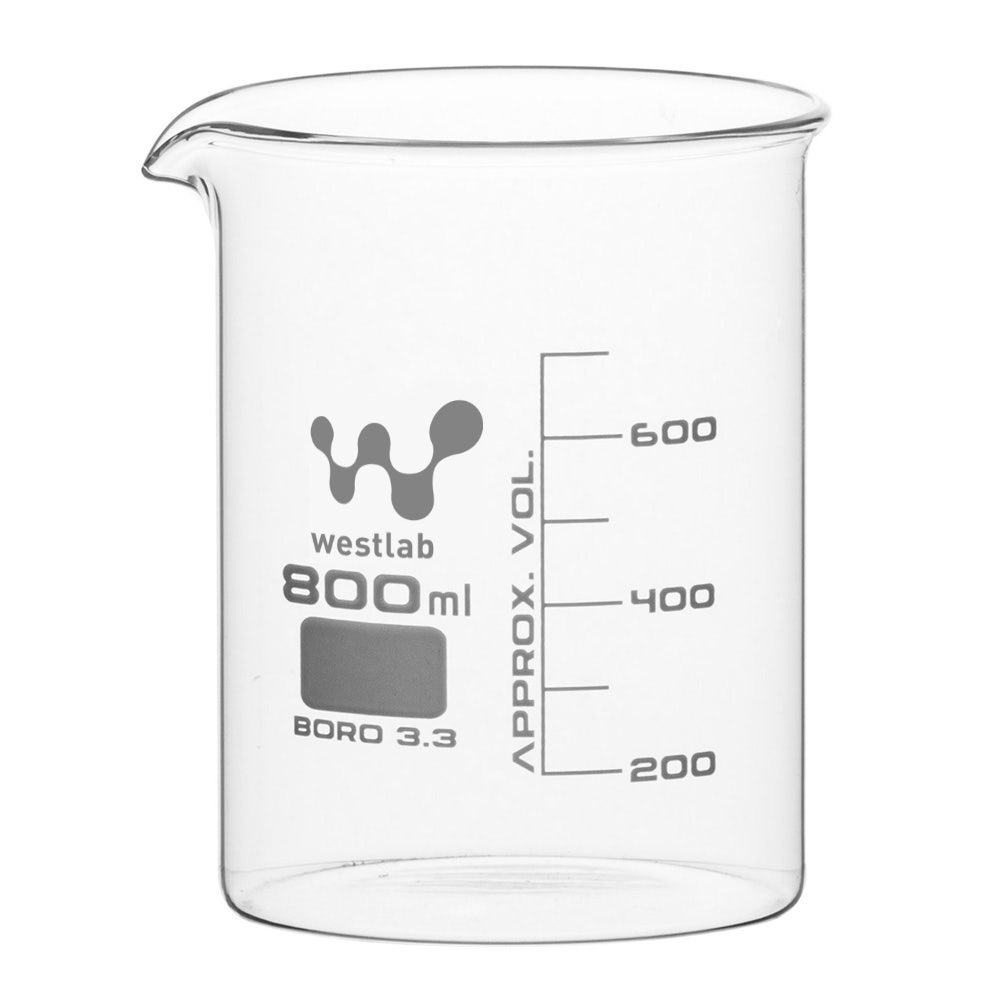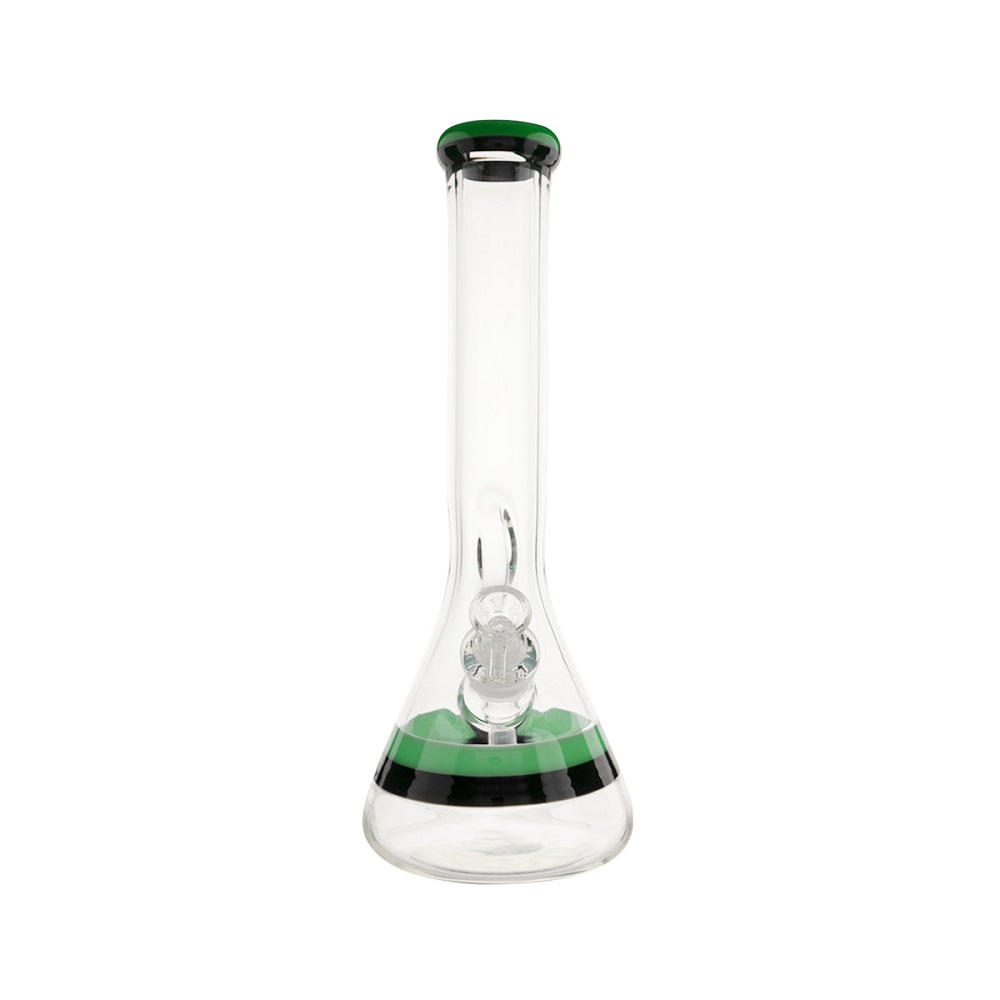Beakers: An Overview and Their Uses in the Lab
Cylindrical Shape and Graduations
Beakers are widely known for their distinct cylindrical shape. Each flask vs beaker has clear markings, known as graduations, which are useful for estimating liquid volumes. Although not perfect for precision, these markings give a quick volume reference during experiments.
Pouring Spout Feature
One key feature of a beaker is its pouring spout. This design helps to direct liquids smoothly, minimizing spills when transferring contents. The spout makes beakers ideal for pouring solutions into other containers.
Varieties and Volume Capacities
Beakers come in various types, including tall forms and low forms, each serving different purposes in the lab. They can handle volumes ranging from a few milliliters to several liters, catering to both small-scale experiments and large-volume processes.
General Use and Limitations
Beakers are essential for general lab tasks like mixing, heating, and temporary storage. However, they are not the best for detailed measurements due to their approximate graduations. Evaporation is also more likely with beakers because of their wide open tops.
![]()
Flasks: Understanding Their Role in Scientific Research
Cone Shaped Design and its Benefits
Flasks are a mainstay in labs due to their unique cone-shaped design. This shape allows for easy mixing and swirling of liquids without spillage. The narrow neck also helps minimize evaporation and contamination from dust. Flasks are great for reactions because their shape can contain splashes that might occur during vigorous mixing.
Flat Bottom Stability
The flat bottom of flasks provides a stable base. This makes them less likely to tip over compared to other types of glassware. This stability is crucial during experiments that require precision, like titrations or when heat is applied directly to the flask.
Types of Flasks
Labs use various flasks for different purposes. Erlenmeyer flasks are common for general mixing and chemical reaction tasks. Boiling flasks withstand high temperatures for heating substances. Meanwhile, volumetric flasks are ideal for precise measurements in quantitative analysis.
Precision in Measurements and Handling Challenges
Flasks feature graduations for estimating liquid volumes, but they are not as accurate as volumetric flasks. For precise measurements, additional equipment may be necessary. The narrow necks can also pose a challenge when cleaning flasks, as brushes may not reach the bottom easily. Despite this, their design benefits generally outweigh these handling challenges.

Key Differences Between Beakers and Flasks
Shape and Measurement Accuracy
Beaker vs flask serve distinct roles in labs due to their shapes. Beakers have straight sides and a flat bottom. Flasks feature a cone shape and narrow neck. Beakers are good for general measuring. However, they are less accurate than flasks, which offer better precision for specific tasks. Flasks’ narrow openings also limit evaporation, enhancing measurement accuracy.
Spills and Contamination Prevention
Flasks’ unique design aids in preventing spills when swirling or mixing. Their narrow necks keep contents more contained compared to beakers. They also reduce risk of contamination from the environment. Beakers, with their wider mouths, are more prone to spills and contamination.
Heating and Chemical Handling
For heating and chemical reactions, flask vs beaker serve differently. Flasks, especially Erlenmeyer flasks, promote even heating and safe reactions. They resist tipping and manage sudden changes in volume when heated. Beakers are less stable when heating due to their wide mouths. But they are handy for tasks involving transferring heated liquids or pouring.
Practical Applications for Beakers
When considering laboratory equipment, practical applications are as vital as theoretical knowledge. Beakers, due to their design, have several applications that make them indispensable in many lab settings.
General Laboratory Procedures
In a lab, accuracy and reliability are paramount. Beakers are often chosen for tasks where precision is not the primary concern but volume is. They’re ideal for simple mixing, stirring, and heating liquids. Beakers are also common in educational settings, where students learn basic lab skills.
High Volume Handling Techniques
For handling larger volumes of liquids, high volume beakers excel. In processes like oil extraction or batch manufacturing, beakers that range up to 20 liters are used, making them suitable for industrial applications. They can also hold smaller vessels in water baths or during sonication.
Pros and Cons in Laboratory Usage
Beakers have a spout for easy pouring, decreasing the likelihood of spills. They come in tall and low forms, meeting different procedural needs. On the downside, measurements on beakers are not highly precise, potentially leading to inaccuracies. Also, evaporation can be an issue due to the wide mouth, which also makes them susceptible to contamination. Despite these cons, their versatility keeps beakers as a staple in labs worldwide.
Practical Applications for Flasks
Unique Design Purposes
Flasks, with their distinctive cone-shaped design, serve many unique purposes in the laboratory. The flask’s design is perfect for mixing solutions efficiently without spillage, due to their tapered shape which allows for easy swirling. The narrow neck of flasks is ideal for adding substances without risking too much exposure to the air, thereby minimizing the loss of reagents due to evaporation. Because of these features, flasks are excellent for conducting titrations where careful addition of reagents is critical.
Erlenmeyer flasks in particular, are often used in chemical synthesis and for storing reagents, as their shape makes it easier to label, organize, and handle multiple flasks in a lab setting. Additionally, their ability to be sealed with a stopper or cap facilitates the safe storage and transportation of substances.

Safety Features in Laboratory Settings
In terms of safety, flasks provide significant benefits. The narrow mouth reduces the risk of splashes or spilling, which is particularly important when working with volatile or hazardous chemicals. This design also helps to protect the contents from contamination from dust or other particles in the laboratory environment. The wide base of a flask ensures it is stable on the benchtop, reducing the likelihood of accidental tipping and spillage during experiments.
Furthermore, the ability to directly heat flasks, especially those made from borosilicate glass, adds to their versatility. The material’s resistance to thermal shock allows flasks to be used safely over a Bunsen burner or hot plate, further demonstrating their critical role in a wide range of laboratory heating procedures.
Cons of using Flasks in Analyses
Despite their benefits, flasks are not without drawbacks. The gradations on the sides of flasks are not as precise as those on volumetric glassware, making them less suitable for precise volume measurements. Care must be taken when reading these markings to avoid inaccuracies in quantitative analyses.
Cleaning flasks can also be challenging due to their narrow necks, making it harder for brushes to reach all interior surfaces effectively. This can potentially lead to contamination if the flask is not properly sanitized between uses. However, the pros often outweigh the cons, making flasks an essential item for a variety of laboratory applications where safety and practicality are priorities.
Decision Making in the Lab: Choosing Between Beaker and Flask
Factors Influencing Choice
When choosing between flask vs beaker in the lab, several factors come into play. The first consideration is the experiment’s goal. If you need to measure large volumes without high precision, a beaker could be the go-to choice. Beakers also work well for solutions requiring frequent transfers or if you plan to use a hot plate. In contrast, if an experiment demands precise measurements or involves chemical reactions at risk of spilling, a flask is likely more suitable. The flask’s narrow neck helps prevent spillage and limits evaporation significantly.
The type of solution you’re working with also matters. Flasks are better for volatile or sensitive solutions since they can be sealed to protect from environmental contaminants. On the other hand, beakers are easier to use when solutions need to be poured after mixing or heating. Lastly, consider the cleaning process. Beakers are generally easier to clean due to their wide mouths, whereas flasks require thorough scrubbing because of their narrower necks.
Considerations for Accuracy and Safety
Accuracy and safety are paramount in lab work. For tasks needing pinpoint precision, flasks, especially volumetric ones, excel due to their accurate gradations. However, beakers’ graduations are less precise and should only be used for approximate measurements. It’s essential to use additional measuring tools when accuracy is critical.
Safety-wise, flasks offer more control over spills and potential chemical splashes due to their design, making them a preferred choice for risky reactions. The choice between a beaker and a flask can directly impact the accuracy of your experiment’s data and the safety of lab personnel. Always prioritize glassware that best matches the level of accuracy required and ensures the safety of those conducting the experiment.
Purchasing Laboratory Glassware: Tips and Recommendations
Erlenmeyer Flask Varieties
When buying flasks, consider the variety you need. Erlenmeyer flasks serve many purposes in the lab. Choose based on what fits your tasks. There are flasks with screw caps, ideal for sealing contents. Some are made of plastic, great for storage and mixing. Borosilicate glass flasks resist heat shocks and are good for heating. Be clear on your needs before purchase. Look for flasks that match the specific tasks you perform. Consider the flask size for your volume needs. Ensure the material suits the types of substances you handle.
Where to Buy Quality Flasks and Beakers
Buy glassware from reputable suppliers. Look for ones with a wide range of options. They should offer both flask vs beaker in different sizes and materials. Check if suppliers provide detailed information about their products. Ensure they have good customer reviews. This helps confirm item quality and reliability. Ask if the supplier can provide product certifications. This shows the glassware meets specific standards. Quality equipment means accurate measurements and safe experiments. Buying from a reliable source ensures you get glassware that lasts and performs well.
